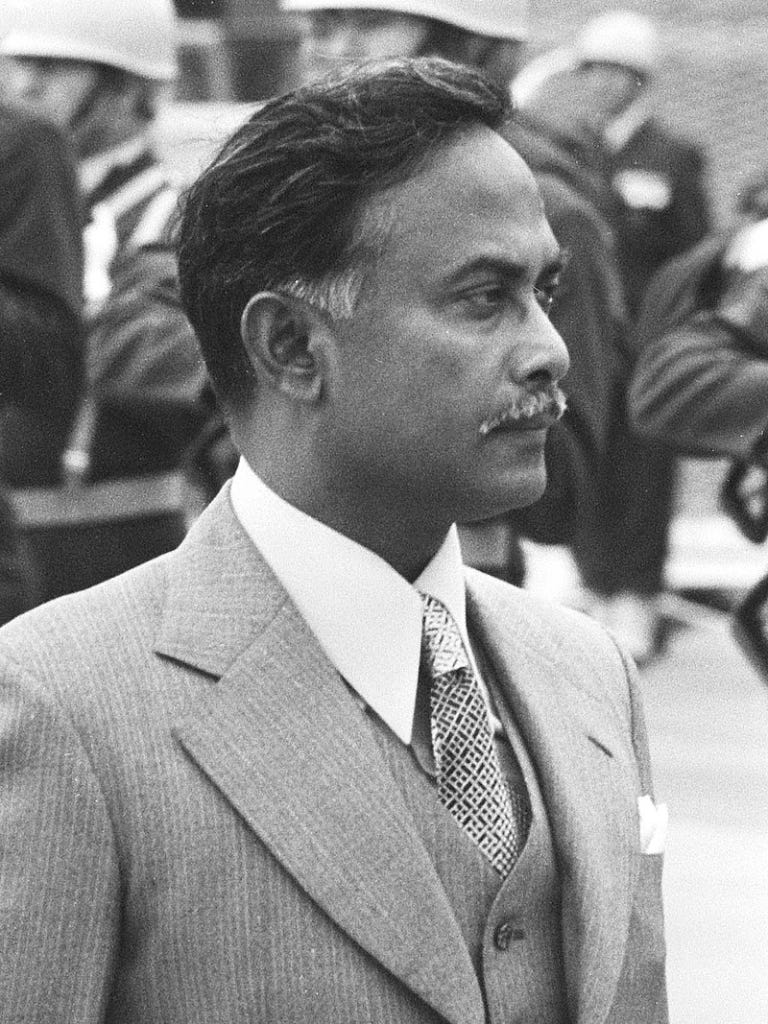Bangladesh Files-1
I had previously covered the atrocities against Hindus in 1971 by the Pakistan Army. In this article will be looking at what happened to Hindu population in Bangladesh, after it became an independent country.
After Bangladesh was formed as a separate country, Sheikh Mujibur Rehman, it’s first President, recognized the atrocities on Hindus during 1971. Though other communities were targeted too by the Pakistan Army, it was the Hindu population that suffered the most. During his visit to Kolkata in 1972, he visited the Hindus in refugee camps there and appealed to them return back. The first constitution also emphasized on secularism and equality of all citizens, irrespective of religion.
However in spite of his commitment, there were two contentious issues where Mujib was found wanting. The first was the demolition and massacre by the Pakistan army at the Ramna Kali Mandir, one of Dhaka’s oldest temples. Mujib refused to return the temple to the original religious body, because as per the Vested Property Act, the ownership of the property could not be established, as there were no surviving members.
And the second was even more contentious, the Vested Property Act, which was earlier known as Enemy Property Act before 1971, that allowed the Government to confiscate property from individuals it deemed as the enemy of the state. Simply put the Govt could just seize your property, if for some reason you had to flee the country. There was the very prominent case of Dhirendranath Datta,a lawyer, and a leading politician, who was arrested and tortured to death by the Pakistan Army in 1971. Because his body was never found later, the Govt confiscated his entire property.
Professor Abul Barkat of Dhaka University in his book, Inquiry into Causes and Consequences of Deprivation of Hindu Minorities in Bangladesh through the Vested Property Act, explored the devastating effect of this act on Hindus there, as per which they lost around 1.64 million acres, which is roughly 53 % of the total land they owned. Also the Awami League(44.2%) and BNP(31.7%) were the biggest beneficiaties of this land grab, which mostly occured between 1972-80. This law has been the main cause of a massive reduction in population of Hindus there from an estimated 22% in 1951 to 13.5% in 1974 to just around 9.6% in 2011.
Mujib not just continued the Act under a different name, he also ensured Awami League would be the biggest beneficiary of it. Following Mujib’s assasination in 1975, Bangladesh went through a series of coups, counter coups, before Ziaur Rehman took charge in 1977, he was also the founder of the Bangladesh Nationalist Party( BNP). He was the one who began the Islamization of the country,introducing Islamic symbolism in all areas, and allowing the Jamaat-E-Islami to contest elections.
The Jamaatis had actively collaborated with the Pakistan Army in 1971, taking part in the massacres, genocide, and were opposed to the independence of Bangladesh. Ziaur Rehman himself was assasinated later in a coup, in 1981. Hussain Muhammed Ershad who came to power through a coup later in 1988, was the one who declared Islam to be the state religion of Bangladesh, which to date remains, neither Awami League nor BNP had changed it.
The first major anti Hindu riots broke out during October-November 1989, during his reign, as a reaction to the Shilanyas at Ram Mandir in Ayodhya. Hindu shops were looted and burnt in Chittagong, temples destroyed in Khulna, while Hindu students of Brojomohun College in Barisal were beaten up and thrown out from the hostel.
Again in 1990, Hindus were once again attacked in Bangladesh, following rumors that the Babri Masjid was demolished, which started on October 30 and continued till November 2. It was The Daily Inqilab a Jamaati funded newspaper, which ran this story, inflaming tensions. Dhakeshwari Temple, one of the holiest Shakti Peethams, after which the city gets it’s name was looted, vandalised and set on fire. The Durga temple at Lalbagh Road, Girigovardhan temple at Pushparaj Saha Lane and Raghunath Jiu akhara at Haranath Ghosh Lane were all attacked and vandalised.
Muslim mobs ran riot in Chittagong, the 2nd largest city of the country with 30% Hindu population, setting fire to more than 300 Hindu homes. Around 1500 Hindu fishermen in the city fled their homes, a Hindu village in outskirts of Chittagong was attacked by a 500 strong mob. The worst violence against Hindus however was in 1992 following the Babri Masjid demolition in India. It began on December 1992 and continued till March 1993, Hindu owned jewellery shops were attacked in Dhaka, 14 Hindu temples were burnt down in Kutubdia Upazilla of Cox Bazaar District in Chittagong Division.
Taslima Nasreen’s novel Lajja is set against the backdrop of these events, following which she was forced to leave Bangladesh. In subsequent posts will be looking at what happened to Hindus after 1992.










